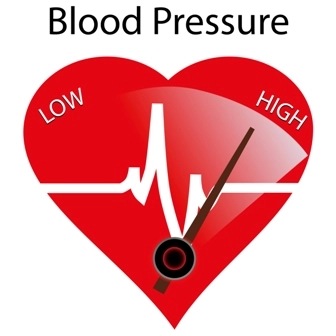5 Answers From Official ICD-10 Guidelines Solidify Your Hypertension Coding
Hint: Master the stages of CKD for coding success. The 2018 ICD-10-CM Official Guidelines for Coding and Reporting recently added a new pulmonary hypertension section. But, how confident are you with reporting the many other types of hypertension that the guidelines list? Answer the following questions to ensure you always submit clean hypertension claims. Examine Relationship Between Hypertension and Other Conditions Question 1: What is the relationship between hypertension and heart involvement and hypertension and kidney involvement? Answer 1: The classification of hypertension "presumes a casual relationship between hypertension and heart involvement and hypertension and kidney involvement, since the two conditions are linked by the term 'with' in the Alphabetic Index," according to the guidelines. Coding tip: You should code hypertension and heart involvement and hypertension and kidney involvement as related conditions, even if the cardiologist's documentation does not definitively link them, per the ICD-10-CM guidelines. The one exception to this rule is if the medical documentation clearly states that the conditions are not related. If the hypertension is not specifically linked to a condition with a term like "with," "associated with," or "due to" in the classification, then only code these conditions as related if the cardiologist's documentation clearly links them. Go This Route in the Case of Hypertensive Cerebrovascular Disease Question 2: How should you report hypertensive cerebrovascular disease? Answer 2: To code for hypertensive cerebrovascular disease, first report the correct code from categories I60- (Nontraumatic subarachnoid hemorrhage) through I69- (Sequela of cerebrovascular disease), according to the guidelines. Then, you should report the correct hypertension code. Patient Has Hypertensive CKD? Do This Question 3: What code should you report if the patient has both hypertension and a form of chronic kidney disease (CKD)? Answer 3: If the patient has both hypertension and a condition that falls under category N18- (Chronic kidney disease (CKD)), you will report a code from category I12- (Hypertensive chronic kidney disease), according to the guidelines. However, you should not code the CKD as hypertensive if the cardiologist has clearly documented a different cause. Coding tip: You should report the appropriate code from N18- as the secondary code with the correct primary from category I12- to identify which stage of CKD the patient has, the guidelines state. Remember: If the patient has hypertensive CKD and acute renal failure, you must also report an additional code for the acute renal failure. Look to I13- for Hypertensive Heart and CKD Question 4: How should you report a patient who experiences hypertension with both heart and kidney involvement? Answer 4: If the patient has both hypertensive kidney disease and hypertensive heart disease, you will report the appropriate codes from combination category I13- (Hypertensive heart and chronic kidney disease), according to the guidelines. If the patient also experiences heart failure, you should report an additional code from I50- to identify which type of heart failure. Coding tip: Similarly to the rules for hypertensive CKD, for hypertensive heart and CKD, you will report a code from category N18- as a secondary code with the primary category I13- code to identify the stage of CKD the patient has. Don't miss: The codes in category I13- are combination codes, which include hypertension, heart disease, and CKD, according to the guidelines. The guidelines explain that if a patient has hypertension, heart disease, and CKD, you should report the correct code from category I13-, not the individual codes for hypertension, heart disease, and chronic kidney disease, or any options from I11- or I12-. If the patient experiences both acute renal failure and CKD, you must report an additional code for the acute renal failure, the guidelines add. Mind the Stages of CKD for Hypertension Coding Success Question 5: What are the stages of CKD and why are they important to learn? Answer 5: If the patient has hypertensive CKD or hypertensive heart and CKD, you must report a code from N18- as the secondary code, along with the proper primary code from categories I12- or I13-, according to the guidelines, To find out more about CKD, you can read "Chapter 14: Diseases of the Genitourinary System" in the guidelines. CKD requires documentation and coding of the appropriate stage (stage 1, stage 2 [mild], stage 3 [moderate]; stage 4 [severe]; stage 5), according to Caral Edelberg, CPC, CPMA, CAC, CCS-P, CHC, founder and chairman of Edelberg & Associates. Take a look at the following ICD-10 codes, which represent the different stages of CKD: You will report N18.6 (End stage renal disease (ESRD)) when the cardiologist has documented end-stage-renal disease (ESRD). Caution: If the cardiologist has documented both a stage of CKD and ESRD, report N18.6 only. Bonus tip: When coding N18.6, do not forget to also capture Z99.2 (Dependence on renal dialysis) when documented, says Christina Neighbors, MA, CPC, CCC, coding quality auditor for Conifer Health Solutions, Coding Quality & Education Department, and member of AAPC's Certified Cardiology Coder steering committee.




